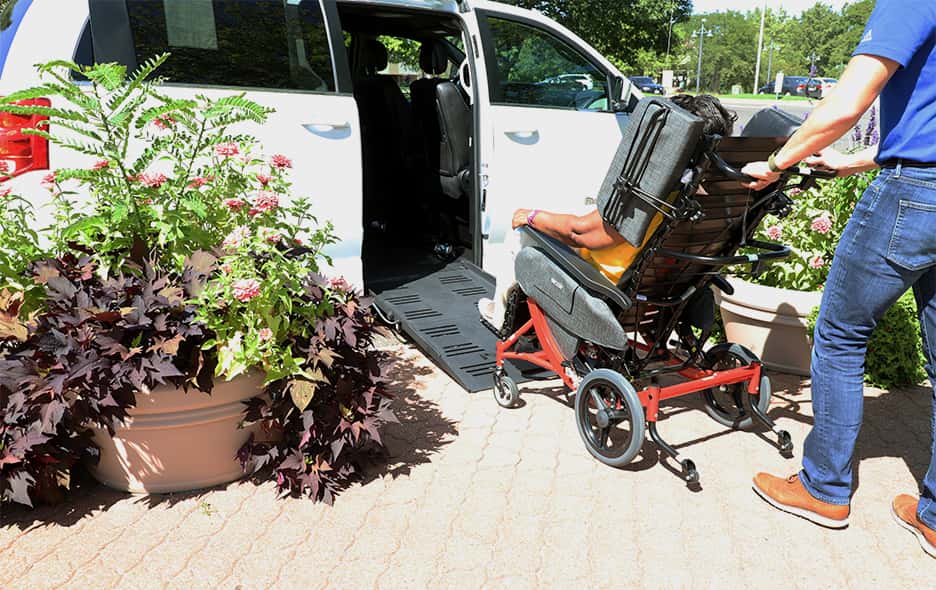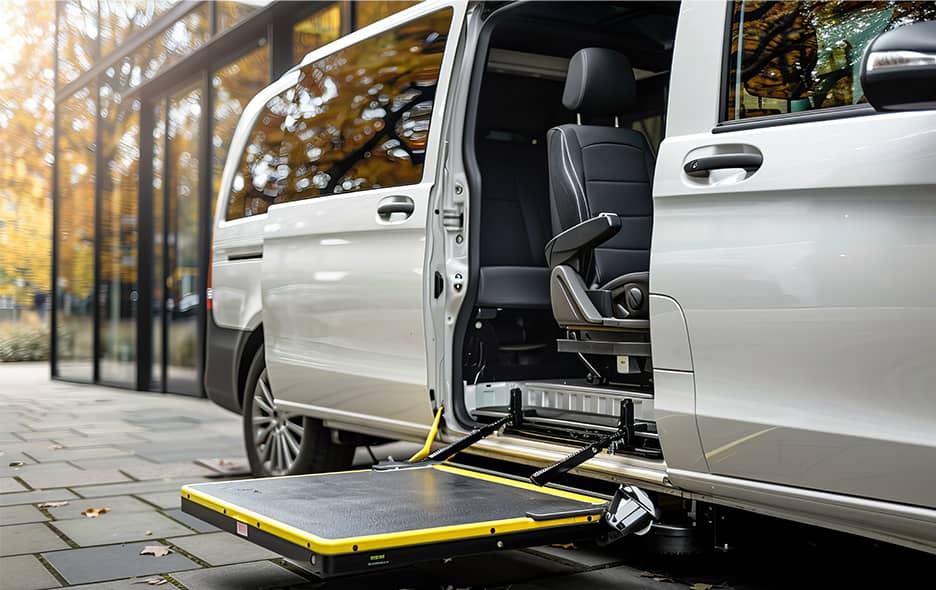Every year, millions of Americans put off healthcare services due to a lack of transportation. These people, often referred to as “transportation disadvantaged,” aren’t able to transport themselves to medical facilities due to disabilities, low income, or age. With a non-emergency medical transportation (NEMT) business, you could be their solution and provide a much-needed service with lucrative returns.
What Is NEMT?
Non-emergency medical transportation, or NEMT, is similar to a taxi service for health-related trips. NEMT takes people to medical appointments, physical therapy, dialysis, or even the pharmacy.
Let’s say your grandma needs regular check-ups but can’t drive anymore. NEMT is a helpful resource to get her to the doctor safely and on time, without the stress of public transport or relying on family schedules. It’s a vital service for folks who need medical care but don’t have an emergency.
Moreover, Medicare and Medicaid often cover non-emergency medical transportation for those who qualify. So, if your grandma is eligible, she wouldn’t have to worry about paying for the service.

Why Consider Starting an NEMT Business
Thinking about getting involved? Here’s why a NEMT business might be a good idea:
- Growing Demand: With an aging population that needs regular medical appointments, the demand for NEMT services is skyrocketing. You’re entering an expanding market!
- Helping the Community: You’re not just running a business; you’re providing a critical service that helps people get to their medical appointments safely and on time. It’s fulfilling and impactful.
- Flexible Operations: Whether you want to start small with just one vehicle or aim big with a fleet, you can scale your business to fit your resources and goals.
- Stable Income: Medical appointments are consistent, and many are covered by Medicare and Medicaid, ensuring a steady income stream.

What Is the Cost to Start a NEMT Business?
You’ll need at least $40,000 and $80,000 to start a non-emergency medical transportation business. Here’s a quick breakdown:
Initial Costs
- Vehicles: Reliable, accessible vans or minibuses cost $16,000–$83,000 each.
- Patient Transportation: Many of your clients will rely on you to provide an NEMT-ready wheelchair or stretcher. Broda Traversa wheelchairs cost approximately half as much as a typical stretcher, which can be $15,000 each.
- Licensing and Permits: Expect to spend about $1,000–$3,000, depending on your location.
Ongoing Operational Costs
- Insurance: Comprehensive coverage for your fleet and business runs roughly $5,000–$10,000 annually.
- Salaries: The average cost to hire an NEMT driver is $17/hr or $36,230 annually. Also, consider the cost of hiring schedulers and administrative personnel.
- Vehicle Maintenance and Repair: Oil changes, tire replacement, brake service, etc, will cost about $1,500 to $3000 per month. Also, factor in a separate cost for fuel.
- Marketing: Initial advertising and promotional efforts, approximately $2,000–$5,000.
These are ballpark figures, so your actual costs vary based on your specific needs and local regulations. Considering all these factors, you can see why there’s no simple answer for either a patient or a business owner about how much it costs for non-emergency medical transportation.

How Much Does NEMT Cost: Details for an NEMT Business Owner
If you’re creating or revising an NEMT business plan, use this examination of how much non-emergency medical transportation costs to get you started.
Vehicle Acquisition
Reliable vans or minibuses can cost anywhere from $16,000 to $83,000, and they will need to be equipped for wheelchair access and other accessibility features.
Your costs will involve any additional features or accommodations required to ensure your vehicle fleet is accessible to those who cannot board the vehicle independently. This may include a wheelchair ramp or lift, securement, and room for mobility.
Modifications may include space for service animals and outfitting your fleet with text-based telecommunications equipment, such as a teletype and telecommunications device (TTY/TDD), for those who are deaf or hard of hearing.


The Future of NEMT Comfort & Mobility
Complete the form to learn how the Traversa™ Transport Wheelchair can help improve your NEMT business.
"*" indicates required fields
Licenses and Permits
Generally, NEMT business owners can expect to pay between $1,000 and $3,000 on licensing and permits. Like any business, your NEMT startup will require a business license and Federal Tax Identification Number (FTIN). Additionally, there may be state-specific requirements, such as an NEMT license through the board of transportation for emergency or medical services. You’ll also need a National Provider Identifier (NPI), which helps you contract directly with NEMT brokers.
Along with state-specific requirements for NEMT vehicles, there are federal requirements from the Department of Transportation (DOT) and the Americans with Disabilities Act (ADA). Ensure your vehicle and equipment properly accommodate patients with disabilities. Research your state’s specific regulations, licenses, and permits required to operate.
Requirements may include permits for advertising medical services, rules surrounding vehicle inspections, and regulations about who must have a commercial driver’s license (CDL).
Transportation for Patients
Investing in equipment to improve your customers’ safety and comfort during non-medical transport used to include expensive stretchers, but Broda’s Traversa Transport Wheelchair provides better efficiency for your business and unmatched safety and comfort for your patients.
Here’s a direct comparison between stretchers and Traversa wheelchairs:
Products |  |  Stretchers |
|---|---|---|
Cost | $7,500 each (MSRP) | $15,000 each |
Number of Operators Required | 1 | 2 |
Estimated Annual Maintenance Cost | $400 each | $2,400 each |
The Traversa is the first wheelchair solution solely designed for NEMT vehicles. It is an entirely new piece of equipment that combines the practicality of a stretcher with the comfort, convenience, and dignity of a Broda wheelchair.
Insurance
Having quality insurance coverage for your NEMT business is an important step. Not only is insurance mandatory, but partnering with the best insurer is a vital safeguard for every aspect of your operations.

This includes covering:
- General liability
- Auto liability
- Professional liability (malpractice, etc.)
- Commercial auto
- Workers’ compensation
- Hired and non-owned auto liability
Insurance costs can vary based on your vehicle models, the size of your fleet, and the drivers you hire. On average, covering your fleet and business operations costs between $5,000 and $10,000 each year.
Employee Salaries
The average NEMT driver earns $36,230 annually: around $17/hr. In addition to drivers, you may also need to hire schedulers and administrative personnel at varying salaries.
Fuel and Maintenance
Be sure to factor in fuel costs and keep track of this every month. Since prices can fluctuate and your business relies on staying in motion, you have to remain aware of any short-term spikes in fuel costs.
Preventative maintenance is known to help reduce overall expenses and keep vehicles running in optimal condition. Changing your oil, rotating wheels, and checking brakes can help you get the best fuel efficiency and prevent costly repairs.
Ongoing maintenance costs vary widely depending on the make and model of your vehicles and fluctuations in the economy.

Office and Technology Expenses
The technology you invest in may include your communications equipment like a TTY/TDD mentioned earlier, along with:
- NEMT software to help you with scheduling, dispatching, and managing daily trips
- Web development and maintenance
- IT support
- Data security
Office and administrative costs cover many categories from setting up your office space and fitting it out with furniture and computers, to initial and ongoing marketing efforts, to legal fees. These costs can vary widely depending on where you operate and how much you choose to allocate to these components.

Reduce Operating Costs for Your NEMT Business
Find out how much you could save by using Traversa over stretchers or wheelchairs.
How Much Do NEMT Businesses Make?
Before starting any for-profit business, you must consider its revenue potential. Will it align with your financial goals or earn enough to keep you motivated long-term? How quickly will it become profitable? Will the profits be enough to merit the financial risks or pay back potential investors?
So, how much do NEMT companies make? The amount depends largely on the number of vehicles you have on the road. Ideally, a well-rounded NEMT business should have at least four vehicles to cover basic ambulatory, wheelchair, stretcher, and courier services. However, you can kick things off with just one vehicle and scale up as your business grows.
This data gives you an idea of what you could earn:
Rates: $25 per ride to $250 per hour, excluding additional fees.
Additional Fees:
- Waiting time: $15–$30 per half hour
- Extra mileage: $2–$10 per mile
- Special needs: Oxygen, attendant, etc.
Peak Charges:
- Off-hours and weekends: 25% more
- Holidays: 45% more
Revenue:
- $30,000–$56,000/year per vehicle
- The average NEMT provider makes about $500,000/year
Remember that these numbers vary significantly depending on the efficiency of your operations, marketing, and the state where you plan to do business.

How Do I Start a Non-Emergency Medical Transportation Business? 6 Steps
We’ve discussed start-up costs and revenue. Here are the next steps to take.
1. Register Your Business
Choose a catchy name, decide on a business structure (like LLC or sole proprietorship), and get your business license.
2. File Medical Transportation Application
Next, you’ll need to file a medical transportation application with your state’s health department to ensure you meet all the necessary regulations.
3. Get Insurance
Insurance is crucial. You’ll need comprehensive coverage to protect your vehicles, passengers, and business.
4. Get Vehicle and Transportation Equipment
Invest in a reliable vehicle and equipment, including wheelchair lifts, stretchers, and other accessibility features.
5. Set Rates
Determine your rates. Research what other NEMT services in your area charge to stay competitive but profitable.
6. Get Contracts
Finally, secure contracts with local healthcare providers, hospitals, and clinics. Building relationships with these institutions can yield new clients.

How to Get NEMT Contracts
Securing client contracts is critical to the success of your NEMT business. However, the process takes some time and legwork. Start by approaching hospitals and managed care organizations (MCOs). Connect with key decision-makers at these institutions through industry events, health fairs, and community meetings. Many will already have NEMT services, so you’ll need a compelling pitch or proposal that highlights the advantages of working with you.
Join industry associations and professional networks like the National Association for Healthcare Transportation Management (NAHTM). Taking this step boosts your credibility and offers valuable business resources. Also, consider partnering with Medicare and Medicaid. Many patients rely on these programs for transportation, and being an approved provider can open the door to more contracts.
Perhaps the quickest way to get your first client is to work with a broker. You can instantly tap into the broker’s network upon signing up.

Get Your NEMT Business Started with Broda
Once you’re ready to launch your non-emergency medical transportation business, turn to Broda for quality seating equipment tailored to your needs. Our range includes rehabilitation, transportation, bariatric, and glider chairs, ensuring patients receive the best care while making it easy for medical professionals to move them.
Check out our Traversa Transport Wheelchair, an industry-first designed specifically for NEMT companies. This wheelchair is perfect for transporting multiple patients throughout the day. Certified for vehicle use, the Traversa replaces stretchers with a more comfortable and cost-effective option. It’s easy to use, making patient transfers seamless for NEMT drivers while maximizing patient comfort.
Call 844-552-7632 today to schedule a demo!





